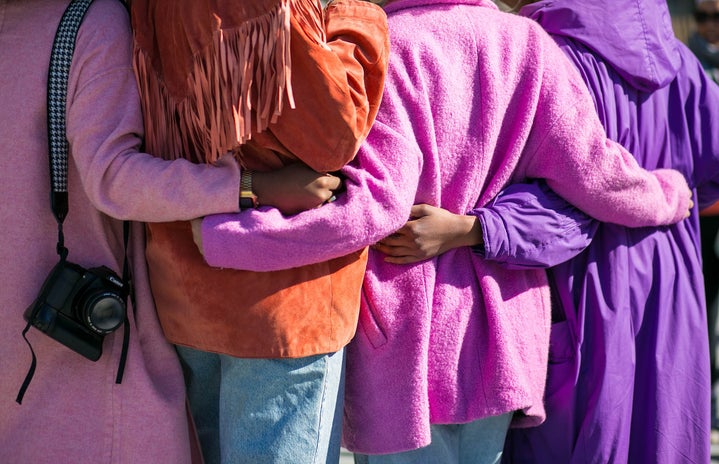In the year of 1905, Rokeya Sakhawat Hossain published Sultana’s Dream in what is now known as modern-day Bangladesh, which was once part of the British Raj. Unknown to her at the time, this text would later on become a seminal feminist text which explored the genre of ‘feminist utopias’ – where the author envisions a new world without gender oppression and offers critiques of the patriarchal society in which they were living in – and even precedes the publication of Charlotte Gilman Perkins text Herland written in 1915. In this way, Hossain and Gilman address women’s issues in their separate cultural, geographical, and religious contexts, but are connected by their desire to highlight the hypocrisy of nineteenth-century society which tried to justify patriarchal oppression under the guise of protection for women. Gilman was an American feminist who is well-known for her publication of The Yellow Wallpaper in 1892, which address the issue of female madness. It highlights how it was the treatment of her illness – through the rest-cure treatment that prohibited women from writing or working and advised them to stay at home and spend time with their baby – that eventually turned her mad, and thus she is described as ‘creeping’ through her bedroom after she tears down the wallpaper. Similarly, Rokeya advocated for women’s education, setting up a school that is known today as the Sakhawat Memorial Girls High School. Also, she founded the Muslim Women’s Association (she was a Muslim in a predominantly Hindu country) which advocated for women’s education and employment through the teachings of Islam.
Sultana’s Dream begins with a woman falling asleep contemplating the condition of Indian womanhood when she awakens from her dream to the sight of Sister Sara. As they agree to stroll through the garden, the issue of purdah (translated to veil) arises when the woman feels awkward “walking around unveiled”. The purdah tradition practiced by Hindus and Muslims alike forces women to veil themselves so as not to be seen by men who are not related to them, usually with clothing that covers their whole body and a scarf over their face, and involves living in a separate part of the house or behind a curtain to maintain the segregation of the sexes. Sister Sara explains that in Ladyland, the new world that the woman is currently inhabiting, there is no necessity for the women to be veiled for there are no men allowed outside. There is a reversal of gender roles, with the women who are usually shut in the zenana (a Persian word which translates to ‘pertaining to women’) which is justified by their biological weakness, now allowed outside while the men are shut indoors in the Mardana. The crux of patriarchy which is reliant on women fearing men outside of their homes is dismantled as the streets are revealed to be unsafe for the very reason that men are inhabiting that space. Sister Sara explains that similar to how an escaped wild animal would endanger those in the marketplace, men put the safety of women in jeopardy because some of them represent the threat of rape, murder, and assault.
This revolutionary text offers a different perspective on gendered oppression through the lens of tradition and culture, which is useful because it helps feminists to understand how women across the globe face different barriers to their freedom. Rokeya used her own experiences of being raised as a Muslim girl in an upper-class family to write this as it informed her opinions on the ‘woman question‘. In the West, this pertained partly to women’s new and contested visibility in public spaces in a rapidly industrializing and modernizing society, which brought about demographic changes with large numbers of women migrating to the cities in the UK and US for paid work. Born as a woman, she was made to comply with the strict purdah system which secluded her to the domestic realm, preventing her from receiving a Western education that her brothers received in order to allow them to secure civil servant positions in the colonial administration. Despite the restrictions imposed on her, she was educated by her brothers and later on, when she was married she was encouraged by her husband to continue her education. He encouraged her to write in her mother tongue Bengali in order to connect with her people and language, despite him speaking Urdu, which highlights an important fact of patriarchy. In South Asian culture, where the woman is transferred from the physical property of her father to her husband, the character of the husband is of significant importance. Rokeya was fortunate to be married to a western educated, liberal-minded man who believed that women should have a right to be educated and write down their thoughts. However, this should not be the case. Women should not have to be reliant on the goodwill of their husbands in order to access education, which is perceived as a natural right for men.
Reading the writing of feminists from different parts of the globe offers us an insight into how they perceive women’s oppression, as well as how they imagined womanhood for the next generation. Rokeya is just one example of a South Asian woman whose writing during the colonial context of the British Raj highlights the many layers of oppression that women face: colonialization, tradition, religion, culture, and class. In essence, the writing of feminist utopias can be seen as a political act because women allow themselves to imagine a world that is matriarchal in structure and free from violence, war, and oppression for everyone.

